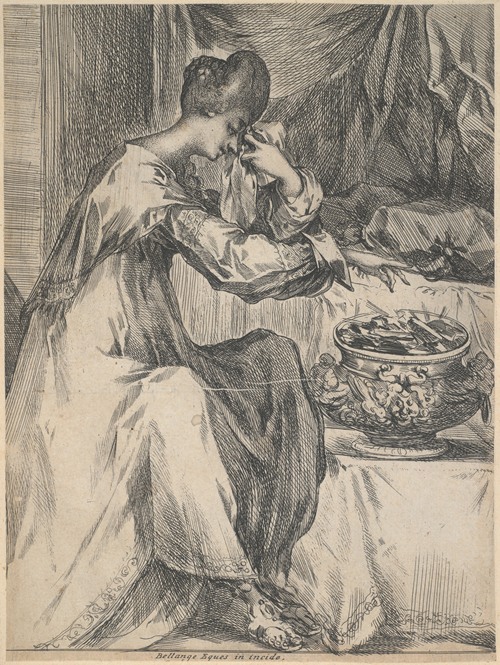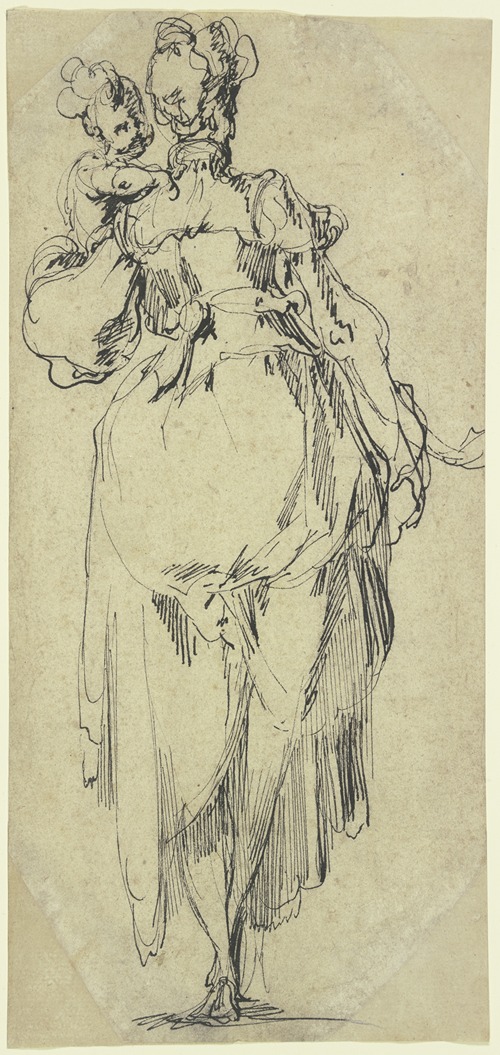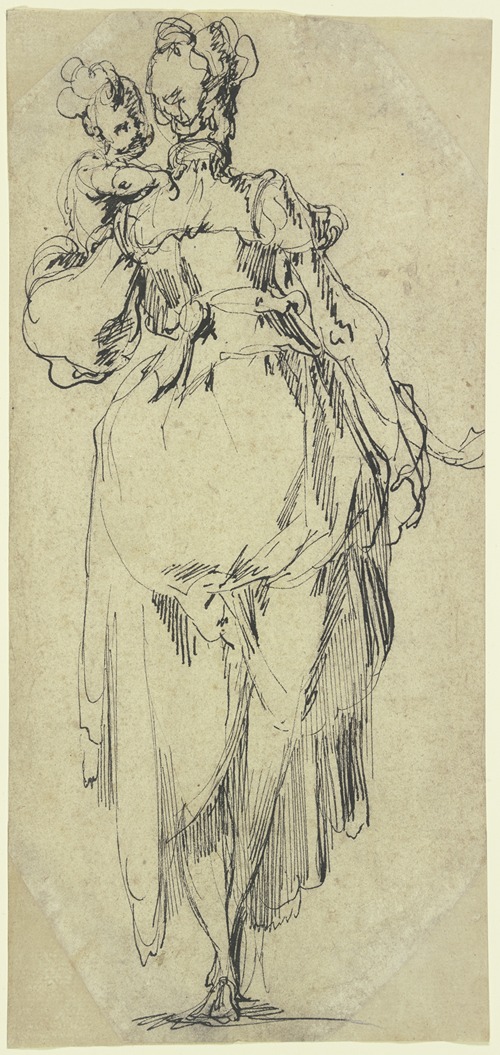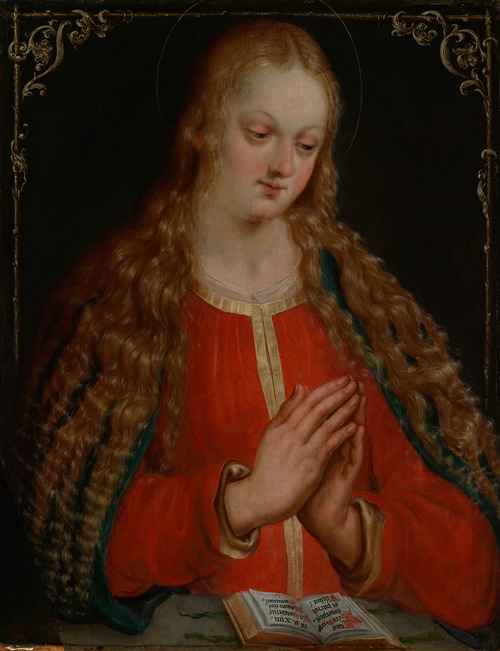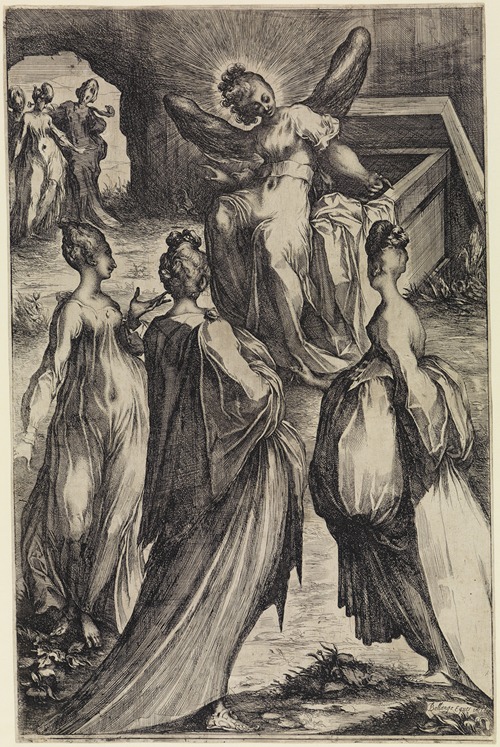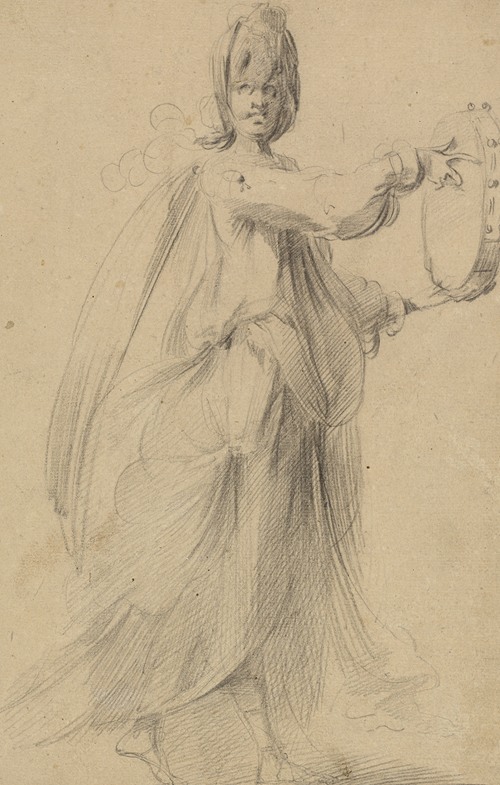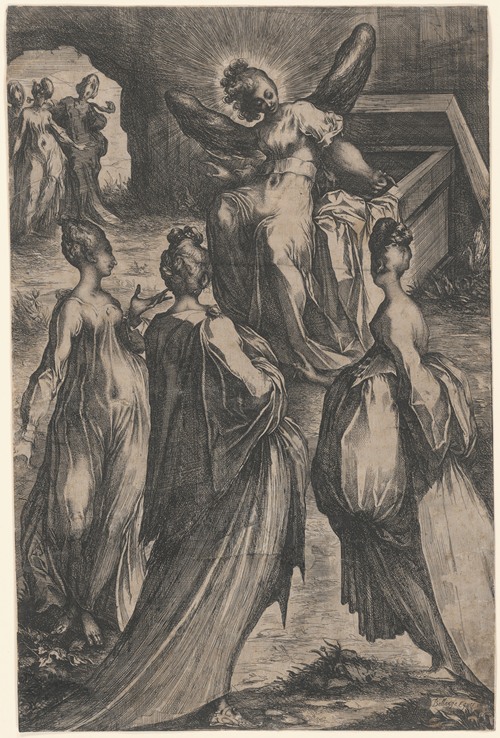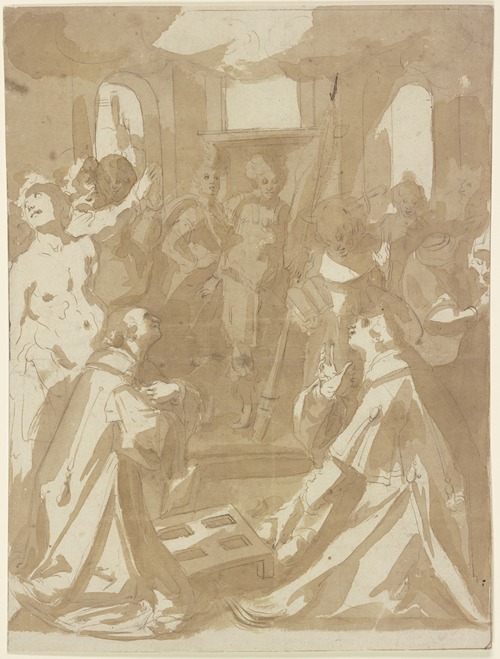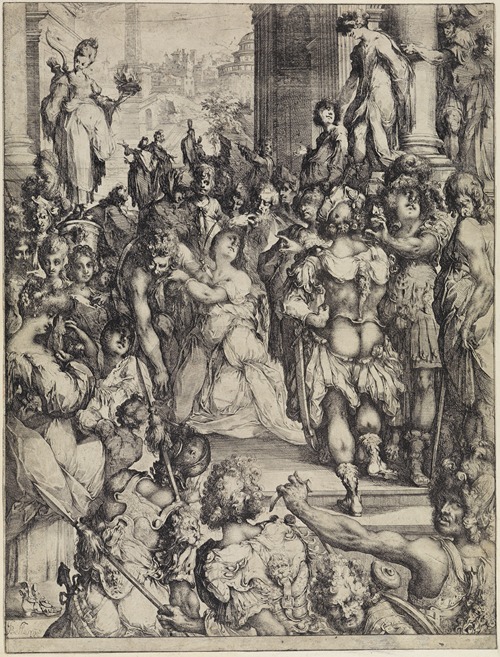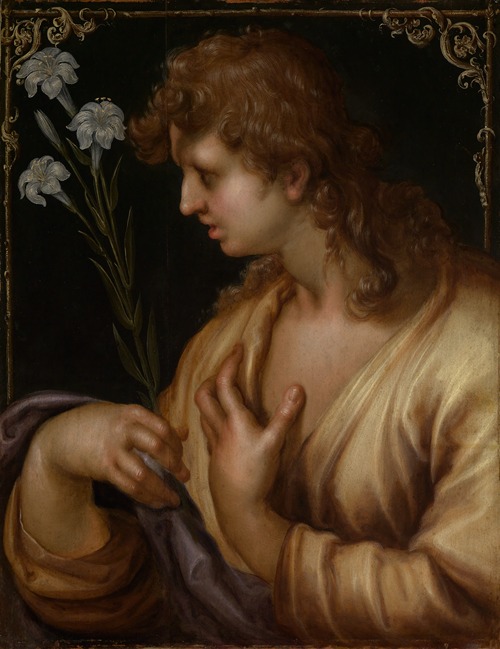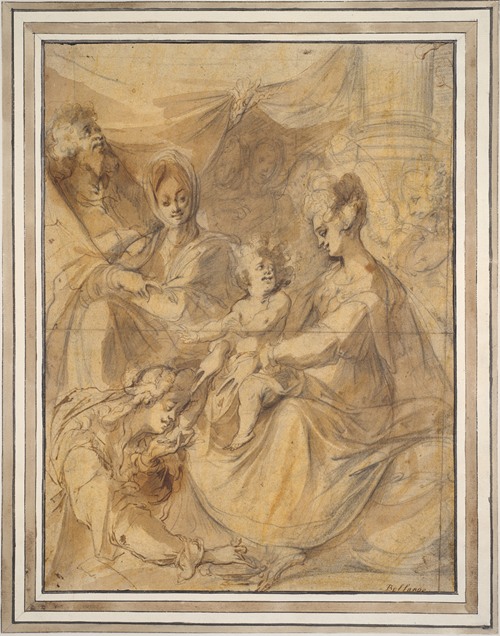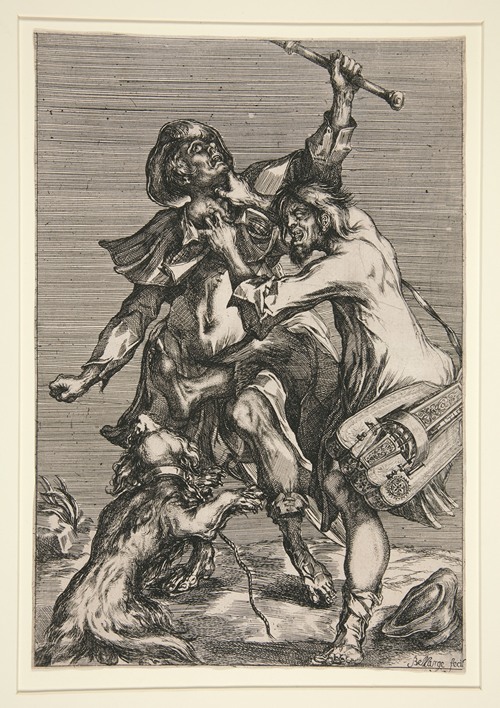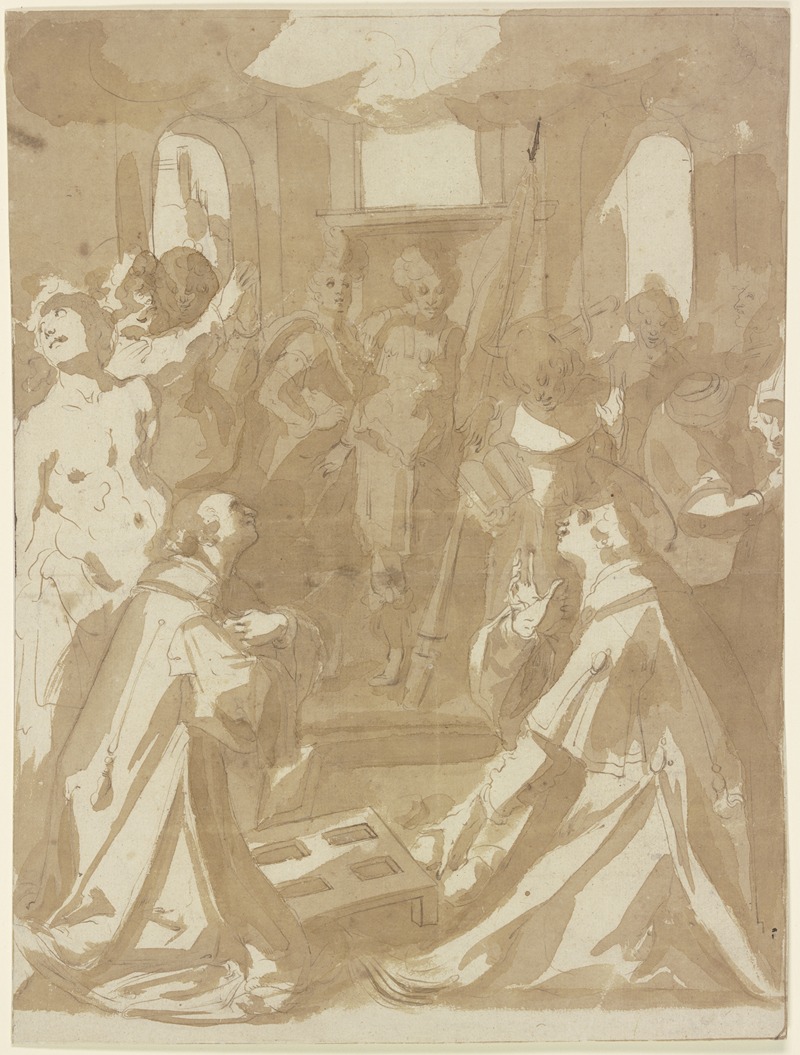
Jacques Bellange was an artist and printmaker from the Duchy of Lorraine (then independent but now part of France) whose etchings and some drawings are his only securely identified works today. They are among the most striking Northern Mannerist old master prints, mostly on Catholic religious subjects, and with a highly individual style. He worked for fourteen years in the capital, Nancy as court painter to two Dukes of Lorraine, before dying at the age of about forty, and almost all his prints were produced in the three or four years before his death. None of his paintings are known to have survived, but the prints have been known to collectors since shortly after his death, though they were out of critical favour for most of this period. In the 20th century they have been much more highly regarded, although Bellange is still not a well-known figure.
Bellange's place of birth and family background are unknown, according to Griffiths and Hartley, but most French sources assume he was born in the Bassigny region, also apparently known as "Bellange", in the south of the duchy around the fortified village of La Mothe, where he is first documented in 1595. The village was completely destroyed in 1645 by French armies after a siege during their conquest of Lorraine, and no longer exists.
He is recorded in 1595 as living "at present" in La Mothe; he had travelled to Nancy, where he took on an apprentice, and it is inferred that he must have been at least 20 to do so, hence his approximate date of birth. The complete absence of mentions in the record of his family, his rapid rise from 1602 in the court at Nancy, and his use of the title of "knight" has led to speculation that he may have been the illegitimate son of some court personage.
After the 1595 record there is a complete gap until 1602, although the destruction of La Mothe is likely to be one reason for this. Scholars have speculated that Bellange travelled either in this period or before 1595. The connection with Crispijn de Passe in Cologne (see below) may mean that he had visited that city. In eight of Bellange's prints, his signature describes him as "eques" or "knight", but it seems clear that this title was not given by the Dukes of Lorraine. It is not impossible that he had acquired it at some other court during this period, and returned to Lorraine around 1602 with the prestige of an artist with international experience.
He appears employed as a court painter in Nancy in 1602, and thereafter appears regularly in the court accounts until 1616, the year of his death. After completing his first commission, to paint a room in the palace, he was taken on with a salary of 400 francs in 1603, twice what any previous court painter had been paid, and given the second rank out of the five court painters, with the additional function or title of valet de garderobe.
Some jobs for the court attracted extra payments: in 1606 he repainted, for 1,200 francs, the Galerie des Cerfs, the main public space of the palace, used as a law court among other things. He appears to have repeated the previous scheme of hunting scenes. In the same year he was commissioned (1,700 francs, shared) to execute, but not design, a temporary triumphal arch for the royal entry of Marguerite Gonzaga, the new wife of Henri, the heir to the duchy, who inherited upon the death of his father Charles in 1608. This was Lorraine's first classical triumphal arch, surmounted by a statue of Virgil in honour of the bride's Mantuan home. Bellange also produced a car for use in the ballet produced for the celebrations, with 12 papier-maché putti.
In March 1608, just before the old duke's death, Bellange was given 135 francs for a trip to France to see the new royal art commissions, his only documented travel outside Lorraine. He is not recorded as working on the funeral arrangements in mid-May, so was probably still away. His largest recorded commission, for 4,000 francs in 1610, was to decorate the Salle Neuf of the palace with scenes from Ovid.
In 1612 he married Claude Bergeron, the 17-year-old daughter of a prominent Nancy apothecary, with whom he had three sons. The dowry was 6,000 francs, with a promise that the Bergerons' country house would pass to the couple.
The exact date and cause of Bellange's death in 1616 are unknown. His widow remarried another courtier in 1620 and had a further five children, living into the 1670s. She seems to have neglected her sons from her first marriage, two of whom appear to have died young; Henri, the oldest, was apprenticed in 1626 to Claude Deruet, his father's old apprentice, and was a minor painter, latterly in Paris.
It is generally agreed that 47 or 48 etchings by Bellange survive, and along with a number of drawings these are possibly all that remain of his art today. He probably branched into etching to spread his reputation beyond the rather small world of Nancy, and was successful in this.
His style is a very personal version of the Netherlandish or Northern Mannerism of artists like Bartholomeus Spranger and Hendrik Goltzius, but using a technique derived from Italian etchers like Federico Barocci and Ventura Salimbeni rather than Netherlandish engraving. Sue Welsh Reed relates his style and technique more to the prints of the School of Fontainebleau, while to A. Hyatt Mayor he combined Italian elements "with an all-out emotion that is German and an intricate feminine elegance that is wholly French". Anthony Blunt followed a line of 20th-century criticism that saw his work as:
the last in a long evolution of that particular type of Mannerism in which a private mystical form of religious emotion is expressed in terms which appear at first sight to be merely those of empty aristocratic elegance. The founder of this tradition was Parmigianino, who invented many of the formulas used by his successors, such as the elongation of the figures, the small heads on long necks, the sweeping draperies, the strained, nervous poses of the hands, and the sweet ecstatic smile which those of Protestant upbringing find it hard not to think of as sickly and insincere, but which incorporates a particular kind of mystical feeling.
There are no concessions to realism in his work. Female figures predominate; most, but not the Virgin, dressed in a fantasy mixture of contemporary court fashion and antique dress. Men mostly wear fantastical versions of Ancient Roman parade uniforms mixed with Oriental elements, including some of the most elaborate footwear seen in art. His work for the court in designing costumes for masques and ballets may be an influence here, and it has been suggested that the four female "gardeners" are connected with specific costume designs. Regular special effects in his compositions include manipulation of space, and many large figures seen from behind in the foreground of works; both the Apostles and Magi sets of single figures include ones seen only from behind, with no face visible. Technically, he makes much use of stippling and burnishing to achieve effects of light and to convey texture.
His two prints with a hurdy-gurdy man come from a very different world of genre works and realism, and the violence of the larger one was original at the time, anticipating themes to be taken up in later decades by the slightly younger Lorraine artist Jacques Callot and others.
His first venture into etching seems to be a single self-portrait inserted into a large print of the ceremonial entry of the new Duke Henri into Nancy in 1610. The established printmaker Friedrich Brentel and his young assistant Matthias Merian—later a major producer of maps and town views—had been brought in to produce a series of prints depicting the funeral of the old Duke Charles in 1608, and the celebrations for the new duke after mourning was complete. Plate 10 of the series shows a large group of mounted courtiers as part of a procession, and it was realized in 1971 that one of the figures, and his horse, is etched in a completely different style, that can be related to Bellange's other prints. It is now generally agreed that Bellange persuaded Brentel (or vice versa) that he should portray himself. This would have been in 1611, and a bookplate that looks to be an early effort is dated 1613; after that, none of his prints are dated, although most are signed.
Scholars have attempted a tentative chronology for the prints, essentially within the period from 1613 to 1616, based mainly on Bellange's increasing confidence and skill with the medium of etching, which was usually supplemented by a limited amount of engraving and, in a few cases, touches of drypoint. However, Griffiths and Hartley are too cautious to do so, noting that differences of technique can arise as much from the different requirements of individual plates as developing skill. Sue Welsh Reed, on the other hand, makes many comments on the assumed place of individual prints in a chronology, placing works like the Annunciation and Pietá among the last, and also seeing an increasing skill in composition as the sequence progresses.
Bellange's widow is recorded as owning 22 of his etched plates in 1619; probably these included the 18 that were later re-issued by the Parisian publisher Jean Le Blond, who added his name to the plate. This suggests that in his lifetime, Bellange supervised the printing of impressions himself; from at least 1615 there was a printing press for intaglio copperplates (a different piece of equipment to a book press) in Nancy. Distribution of prints through a network of dealers across Europe was already becoming rather efficient. Matthias Merian, whom Bellange must have known from his visit in 1610/11, produced 11 pirate copies of Bellange prints for a publisher in Strasbourg, probably as early as 1615—a standard sign of a successful print in those days. An impression of Bellange's Pieta records that it was bought by John Evelyn in Rome in 1645, and Cassiano dal Pozzo had bought several Bellange prints there, and copies, by the 1650s.

